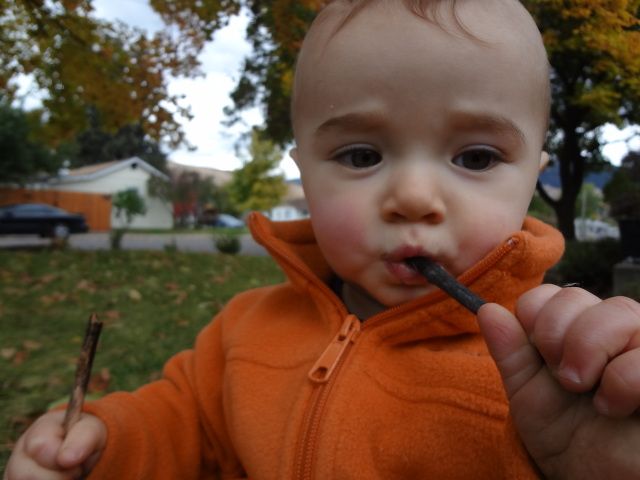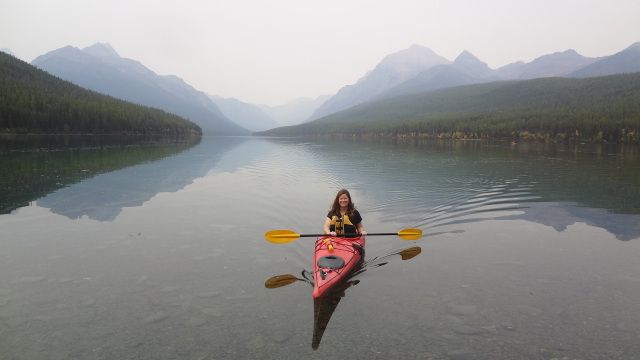Back when I was at the University of Utah I occasionally sat in on lectures by Mark Strand, who at the time (or just previous, I can’t remember), was the poet laureate of the United States and who, by the way, was just way too cool to teach undergrad classes. At the time I chanced across a short story of his published in the New Yorker called More Life, which I thought then was an interesting story about a man who comes to believe his father has been reincarnated as a horse doing the tourist circuit in Central Park. I see now it’s an awful story, but for some reason it’s always stuck with me.

(Biking to day care, Missoula, October, 2012)
When I was 18 I started keeping a diary. Now the spiral-bound notebooks occupy about three feet of shelf space in the attic office. I started reading them last summer, cover to cover, and had the strange sensation of living two lives, the one I’m in now and the one I inhabited back then, and they seem oddly parallel and eerily totally completely unalike. To remember those things in detail was to recapture a lot of life.

(Missoula, October 2012)
Last week we had a baby shower at work for one of my bosses, and like a lot of people are prone to say, someone said, Well, enjoy every minute of it because it sure goes by fast. And then turned to me and said, Right, Jeff? To which I could only reply the same thing I’ve been saying to everyone who says that to me, No, this was the longest freaking year of my life.

(Kalispell, October 2012)
So today Cooper is one, and before he was born I started keeping a second diary just of him, and this morning while waiting for him to wake up I read through most of it, and was struck again, in miniature, at two lives lived simultaneously. Yeah, a long year all right. Which is fine, because I’d rather stretch things out than condense them.

(The firetruck came to daycare, Missoula, October 2012)
And then this. While searching for More Life because I was too lazy to pull my copy out of the bin in the garage which holds all my old clippings, I found this, which is actually a quite good poem by Strand, and called, more appropriately, The Continuous Life:
What of the neighborhood homes awash
In a silver light, of children hunched in the bushes,
Watching the grown-ups for signs of surrender,
Signs that the irregular pleasures of moving
From day to day, of being adrift on the swell of duty,
Have run their course? O parents, confess
To your little ones the night is a long way off
And your taste for the mundane grows; tell them
Your worship of household chores has barely begun;
Describe the beauty of shovels and rakes, brooms and mops;
Say there will always be cooking and cleaning to do,
That one thing leads to another, which leads to another;
Explain that you live between two great darks, the first
With an ending, the second without one, that the luckiest
Thing is having been born, that you live in a blur
Of hours and days, months and years, and believe
It has meaning, despite the occasional fear
You are slipping away with nothing completed, nothing
To prove you existed. Tell the children to come inside,
That your search goes on for something you lost—a name,
A family album that fell from its own small matter
Into another, a piece of the dark that might have been yours,
You don't really know. Say that each of you tries
To keep busy, learning to lean down close and hear
The careless breathing of earth and feel its available
Languor come over you, wave after wave, sending
Small tremors of love through your brief,
Undeniable selves, into your days, and beyond.

(Sidney, British Columbia, August 2012)
And finally: it’s called My Body, but the refrain is “Because I want more”.
My body
http://youtu.be/Zk3rzPnpgzc

















































